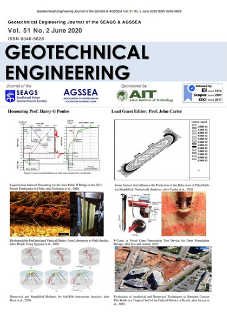Some Factors That Influence the Prediction of the Behaviour of Piled Rafts via Simplified (Numerical) Analyses
Main Article Content
Abstract
This article evaluates two distinct external effects on the settlement results from standard analyses of piled raft foundation systems. The influence of the excavation level and the influence of the number of piles underneath the pile will be separately assessed by two independent analyses for two published case histories, respectively a house located in Gothenburg and another in Uppsala, Sweden. They have been initially presented by Hansbo (1993) and Hansbo and Källström (1983). Both structures were founded over a soft, highly plastic marine clay of varying thickness, where the foundation was designed by using the concept of “creep piling”, i.e., piles in a state of full load mobilization. The analyses were carried out with the numerical tools DEFPIG and GARP, by considering a series of simplified assumptions for the load pattern, raft and pile characteristics and subsoil profile. The soil, pile and load characteristics have been considered, with analyses that allowed (and not) the effect of the excavation level (1st case history), and with variation (optimization) of the number of piles (2nd. case history). The exercise emphasizes the importance of the consideration of the excavation level for the proper assessment of the settlement pattern underneath the raft, and the beneficial aspect on the optimization of the number of piles in the piled raft design.
Article Details

This work is licensed under a Creative Commons Attribution-NonCommercial-NoDerivatives 4.0 International License.
Copyright © 2019 Association of Geotechnical Societies in Southeast Asia (AGSSEA) - Southeast Asian Geotechnical Society (SEAGS).


